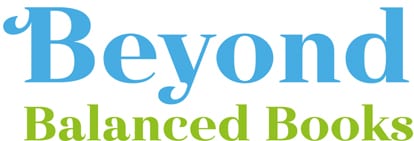As an individual, I would not be termed an early-adopter. I’m cautious about new technology. I wait until it’s been tested, recommended, and proven to be easy to use and extremely convenient.
I am a millennial, but I preferred paperbacks and hardcovers to eBooks. I filled notebooks during classes and lectures. I was trained in desktop accounting programs, with filing cabinets and a storage trailer filled to the brim with invoices, statements, and reports. I lived the analog life.
Then came the cloud – in all it’s wonderful facets. Classics available online – anytime, anywhere. I could take notes, safe and sound on any of my devices. But I didn’t think it could affect my work… accounting has always been done on paper, right? At least since stone tablets went out of style?
Today, I use both cloud accounting and desktop accounting software. I use cloud accounting software here at Beyond. But I also work part-time for my family’s business, which uses desktop accounting software. I would like to share with you why I prefer cloud accounting over desktop accounting software.

Cloud accounting saves time. Xero, one of the cloud accounting systems we use, integrates incredibly well with other apps, which enables the swift transfer of information. Many tasks can be automated. How does all of this work? Consider these examples:
Bank Statements
Cloud Accounting: We use Hubdoc to automatically fetch statements as soon as they are available. As Hubdoc is integrated with our accounting software, Xero, the statement immediately imports into the client’s file. Typically, bank statements are available for review by the 2nd or 3rd of the month.
Desktop Accounting: In my desktop accounting office, statements are received by snail-mail. Statements typically arrive near the 10th of the month. If reports are due the 15th, there isn’t much wiggle room.
Bank Reconciliations
Cloud Accounting: Our cloud accounting software, Xero, fetches bank statement lines automatically. When clients use their credit cards, debit cards, make deposits, or checks clear the bank account – the transactions appear in the bank feed, no entry necessary! All we must do is ensure they are legitimate and properly coded. (Bonus: Fraudulent transactions are easy to catch when transactions are imported in practically real-time.)
Desktop Accounting: When using the desktop software, all bank transactions are entered into the system manually. We strive for accuracy – but to a degree, human error is unavoidable. Every month, a few transactions are caught with the wrong date, incorrect amount, or posted to the wrong bank account. Time is required both to initially enter transactions and to make corrections.
Storage
Cloud Accounting: With the cloud, all files and documents are safely locked away in virtual vaults, untouched by moths, rust, dust or the ravages of time. We can access these files anytime, anywhere as long as we have an internet connection. If files are no longer needed, we can delete with two clicks of a mouse.
Desktop Accounting: With desktop software, all files and documents are saved in paper form. The office is filled with filing cabinets, and the storage trailer is full. Last winter, I spent a week discarding boxes of documents we were legally no longer required to keep. We repeat the process once a year. And eek, there are spiders.
Are you like me? A little cautious of technology? A bit of trepidation before hopping on the bandwagon? Waiting for someone else to test the waters, so you can see if you really want to jump in?
Here at Beyond Balanced Books, we’ve tested the waters and highly recommend you jump in and join us. After all, with the time you’re saving in the cloud, you can fit in a good swim.
Contact the Beyond Team here to get started with your move to the cloud!

